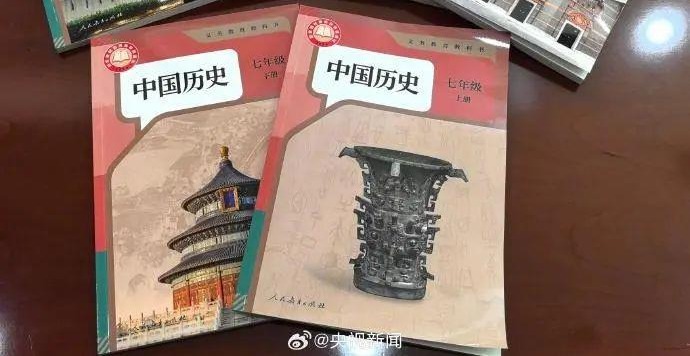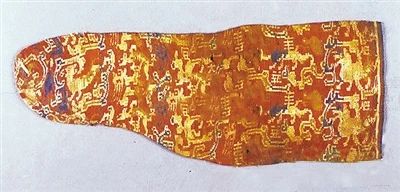At the beginning of this autumn semester, newly revised textbooks were introduced in primary and middle schools nationwide. In the Chinese History textbooks (published by People's Education Press) for the first volume of seventh grade, a cultural relic unearthed in Xinjiang was included. It is a brocade sock of the Eastern Han Dynasty, discovered in Tomb No.1 at a desert in the northern part of Minfeng County, Hotan Prefecture, Xinjiang Uygur Autonomous Region. It is known as the brocade sock with the blessing meaning prolonging life and benefiting descendants.

This cultural relic appears in Lesson 14 of the text book, 'The Opening of the Silk Road and the Management of the Western Regions.' There are so many precious cultural relics left from the ancient Silk Road. What is so valuable about this brocade sock that it can be included in the history textbook?
In October 1959, the archaeological team of the Xinjiang Museum conducted a general survey of cultural relics in a desert in the northern part of Minfeng County along the Niya River. They found a number of exquisite silk fabrics and other funerary objects dating back to the Han Dynasty in a partially exposed "mummy" coffin (Tomb No.1 at the desert in the northern part of Minfeng County).

Photo shows Niya Ruins in in Minfeng County, Hotan Prefecture, northwest China's Xinjiang Uygur Autonomous Region.
Archaeological excavations have confirmed that the Niya Ruins in Minfeng County is the location of the Jingjue Kingdom in the Han Dynasty. In the tomb where the husband and wife were buried together, a part of the bottom of the brocade robe, brocade socks and gloves that the male host wore, and the cock crow pillow on the headrest of the male and female hosts are all made of brocade with characters meaning “prolonging life and benefiting his descendants”. The brocade sock found in this tomb is a notable discovery from that era, and is included in history textbooks this time.

Photo shows the brocade sock of the Eastern Han Dynasty, discovered in Tomb No.1 at a desert in the northern part of Minfeng County, Hotan Prefecture, Xinjiang Uygur Autonomous Region. (Source: National Museum of China)
Han brocade, also known as warp brocade, is a high-grade jacquard fabric with twill and heavy warp weave woven with colored silk threads. The silk weaving industry was developed in the Han Dynasty, and brocade was the symbol of the highest level of silk weaving technology during that period. There was a custom in the Han Dynasty that before death, people would usually prepare a set of the same items according to the standard of food and clothing, so that they could continue to enjoy the same treatment in the afterlife. The Han brocade funerary objects found reflect the spread and influence of silk fabrics and funerary customs of the Han Dynasty at that time.
During the Han Dynasty, various auspicious words such as "prolonging life and benefiting descendants," and "Peace and happiness, good luck, long life," were highly popular. These phrases appeared frequently on silk fabrics, as well as on bronze mirrors, jades, and tiles, reflecting people's concepts of pursuing self-cultivation, praying for longevity, and blessing descendants.
During the Eastern Han Dynasty, various types of brocades were produced. The prolonging life and benefiting descendants brocade was the most intricate. This brocade used the three-color Han brocade weaving method and five colors of silk thread - crimson, white, sapphire blue, light camel, and light orange. It featured cloud patterns, dogwood patterns, animal patterns, and auspicious words in the official script "Prolonging life and benefiting descendants". The warp density was 120 to 132 silk threads per centimeter, and the weft density was 52 to 56 silk threads per centimeter. The warp and weft were interlaced circularly, and jacquard heddles were numerous, showcasing the exquisite silk weaving technology of the Han Dynasty.
The exquisite silk handicrafts of the Han Dynasty, including this brocade stocking, unearthed in Xinjiang, fully demonstrate the prosperity of the Silk Road.
(Material Source: WeChat official account of the National Ethnic Affairs Commission of the People’s Republic of China, Xinjiang is a nice place)









